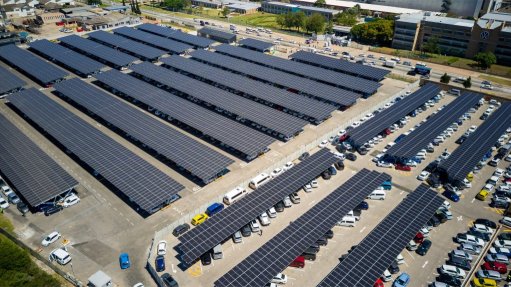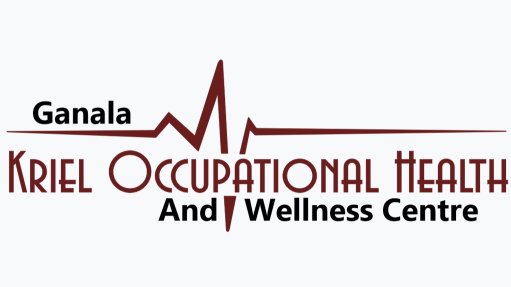Sappi expects higher H2 operating profit after Q1 drop
Lower pulp and paper selling prices led to paper and packaging group Sappi’s operating profit dropping to $73-million for the first quarter of the 2013 financial year, compared with an operating profit of $100-million in the first quarter of the 2012 financial year.
This was also lower than the $118-million operating profit recorded in the fourth quarter of the 2012 financial year.
Sappi’s Southern African business posted similar results to the prior quarter, achieving R270-million in operating profit, compared with R267-million in the fourth quarter, despite the impact of the three-week road transport strike that spilled over into the first quarter. Sales fell to R2.87-billion, from the previous quarter’s R3.15-billion.
However, the first quarter of the current year was weaker than the equivalent quarter last year, when operating profit was R494-million, owing to lower sales volumes, lower average prices in the specialised cellulose business and higher variable costs.
The specialised cellulose business generated earnings before interest, taxes, depreciation and amortisation (Ebitda) of R351-million, representing an Ebitda, margin of 28%.
The Southern African paper business improved, compared with the equivalent quarter last year, as well as the prior quarter. While sales volumes were lower, predominantly owing to the restructuring of the business and resultant machine closures, sales prices were higher for local and export sales.
Meanwhile, Sappi indicated that its North American coated paper business performed well, with increased coated paper sales volumes partially offset by lower average sales prices, which were 3% lower than in the equivalent quarter last year.
The North American business was, however, negatively impacted on by lower pulp prices, which were 5% below the equivalent quarter last year, and 3% lower than the prior quarter.
Despite tough market conditions in Europe during the quarter and mechanical-coated paper industry volumes falling by as much as 7%, sales volumes for the quarter were equal to that of the equivalent quarter in 2012.
“During the quarter we experienced strong downward pressure on pricing for all graphic paper grades, and average graphic paper sales prices were 2% lower than in the equivalent quarter last year,” the company said in a statement.
CEO Ralph Boëttger stated that while Europe remained challenging and conditions had worsened during the quarter, Sappi’s operating and sales achievements were ahead of the market.
He told Engineering News Online that the company anticipated European market conditions to improve, “Things will remain tough during this quarter which is the second quarter, we believe the effect of those [anticipated] pricing increases will only come through at the end of this quarter and from the second half onwards.”
Meanwhile, there was a strong focus on cost containment across the group. Variable costs in Europe and North America were 2% and 4% lower respectively than the equivalent quarter last year. In South Africa the weaker rand/dollar exchange rate put pressure on input costs, particularly purchased wood and pulp.
Sappi further said its main input costs such as energy, wood and chemicals were generally lower than in the equivalent quarter last year, with the exception of the Southern African business.
Northern bleached softwood kraft (NBSK) pulp prices, to which most of the company’s paper pulp and dissolving wood pulp sales are linked, increased during the quarter from the recent lows reached at the end of September 2012. Average NBSK prices were about $90/t lower than in the equivalent quarter last year.
Sappi continued to benefit from the refinancing of debt, which was completed over the past year, as well as the reduction in gross debt. This led to a decrease in the group’s finance costs from $54-million to $42-million when compared to the equivalent quarter last year.
Earnings a share for the quarter was $0.03 compared with $0.09 in the equivalent quarter last year.
Capital expenditure (capex) in the quarter increased to $97-million, compared with $75-million a year before, reflecting the continued expenditure on the dissolving wood pulp projects.
Sappi CFO Steve Binnie told Engineering News Online that the company’s capex would pick up in the second and third quarters, with planned capex for the financial year being close to $600-million, owing, in large part, to the expansion projects at the Ngodwana, in South Africa, and Cloquet, in the US mills.
Boëttger said the specialised cellulose expansion projects at the two mills were within budget and on schedule for start-up in the third quarter of the financial year, after which ramp-up would follow.
“Once the projects [that are currently being developed] are up and running, the North American mill will produce between 300 000 t/y and 330 000 t/y of cellulose, while the South African mills will produce over one-million tons a year. With the majority of production coming from South Africa, we should also benefit from the weaker rand against the dollar,” he said.
Net debt of $2.09-billion was down from $2.18-billion in December 2011, but up from $1.98- billion in the quarter ended September 2012, as a result of the seasonal increase in cash utilised during the quarter to $102-million, down from the corresponding period last year ($111-million).
OUTLOOK
Boëttger noted that the 2013 financial year was an important transitional year for the group, as it expanded its specialised cellulose business and continued to optimise its paper businesses.
Market conditions for the paper business, particularly in Europe, were expected to remain challenging for the remainder of the fiscal year, particularly with regard to pricing and input costs.
Meanwhile, pulp prices, a major input cost for Sappi’s European business in particular, had increased since the end of the first quarter.
Paper pulp and dissolving wood pulp sales from Sappi’s North American and Southern African operations was anticipated to benefit from these higher pulp prices.
“The NBSK price has started to move up over the last three months and continues to increase, so this is positive going forward. Although pricing will not be fantastic, with the North American economy picking up and Chinese economy showing good signs of recovery, our outlook is price-positive,” Boëttger indicated.
On the paper front, he said the company anticipated higher paper prices in Europe during the second half of the financial year, while no increases were expected in coated-mechanical paper until the fourth quarter. In South Africa, paper pricing was also expected to move up, while remaining fairly flat in North America
Further, Boëttger stated that, given prevailing market conditions, Sappi expected the second quarter operating profit, excluding special items to be below that of the first quarter. This was owing, in large part, to the extended planned maintenance shut at its Ngodwana mill for the specialised cellulose conversion project, as well as continued challenging market conditions, in particular, in the European paper business.
However, the company anticipated its operating profit to improve markedly in the second half of the financial year.
Looking ahead, Boëttger said Sappi’s successful commissioning of the Ngodwana and Cloquet mills, on time and within budget, posed a significant challenge and opportunity, while paper and pulp prices, as well as demand would be challenging factors during the rest of the financial year.
Article Enquiry
Email Article
Save Article
Feedback
To advertise email advertising@creamermedia.co.za or click here
Comments
Press Office
Announcements
What's On
Subscribe to improve your user experience...
Option 1 (equivalent of R125 a month):
Receive a weekly copy of Creamer Media's Engineering News & Mining Weekly magazine
(print copy for those in South Africa and e-magazine for those outside of South Africa)
Receive daily email newsletters
Access to full search results
Access archive of magazine back copies
Access to Projects in Progress
Access to ONE Research Report of your choice in PDF format
Option 2 (equivalent of R375 a month):
All benefits from Option 1
PLUS
Access to Creamer Media's Research Channel Africa for ALL Research Reports, in PDF format, on various industrial and mining sectors
including Electricity; Water; Energy Transition; Hydrogen; Roads, Rail and Ports; Coal; Gold; Platinum; Battery Metals; etc.
Already a subscriber?
Forgotten your password?
Receive weekly copy of Creamer Media's Engineering News & Mining Weekly magazine (print copy for those in South Africa and e-magazine for those outside of South Africa)
➕
Recieve daily email newsletters
➕
Access to full search results
➕
Access archive of magazine back copies
➕
Access to Projects in Progress
➕
Access to ONE Research Report of your choice in PDF format
RESEARCH CHANNEL AFRICA
R4500 (equivalent of R375 a month)
SUBSCRIBEAll benefits from Option 1
➕
Access to Creamer Media's Research Channel Africa for ALL Research Reports on various industrial and mining sectors, in PDF format, including on:
Electricity
➕
Water
➕
Energy Transition
➕
Hydrogen
➕
Roads, Rail and Ports
➕
Coal
➕
Gold
➕
Platinum
➕
Battery Metals
➕
etc.
Receive all benefits from Option 1 or Option 2 delivered to numerous people at your company
➕
Multiple User names and Passwords for simultaneous log-ins
➕
Intranet integration access to all in your organisation


















